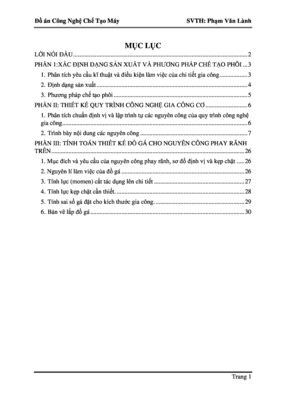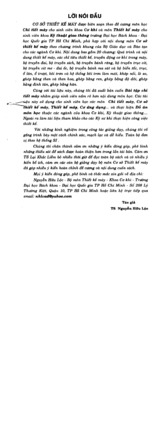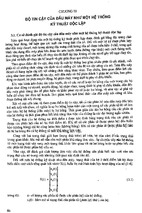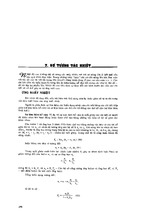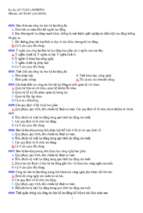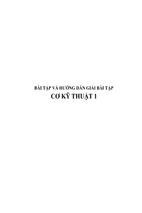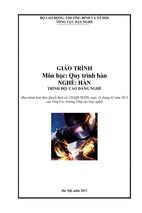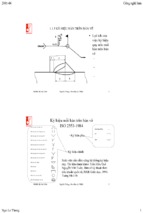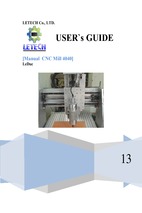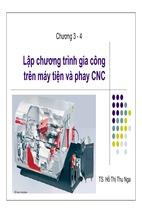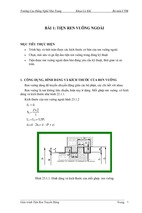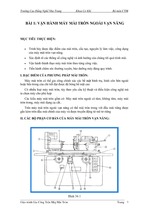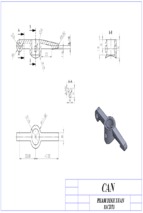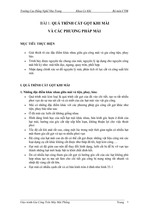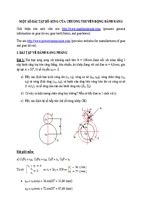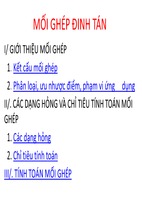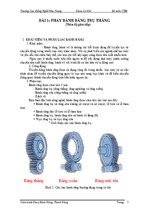Mô tả:
Adhesive Manufacturing Processes
Chapter 8: Hybrid Joining
Univ.-Prof. Dr.-Ing. Prof. h.c. Stefan Böhm
Department for Cutting and Joining Manufacturing Processes (tff)
University of Kassel, Germany
Source: Wikipedia
Agenda
Introduction
Relevant Joining Methods
Possible Combinations
Fields of Application and Examples
2
Hybrid Joining in General
Hybrid joining is a combination of two or more elemental joining methods
The joining processes
● are in the same areas of the workpiece
● parallel or after each other
Goal:
● compensate negative charateristics of the bonding methods
● combine positive characteristics of the bonding methods with each other
Source: DVS – Ausschuss für Technik
3
Properties of Adhesively Joined Bonds
Negative Properties of Bonds
● low beginning strength
● low peel strength
● tendency to creep
● dependent on time, temperature and environment
Positive Properties of Bonds
● transmission of force onto a bigger surface
● high potential for leight weight constructions
● increased stiffness of construction elements
Source: Uni Siegen
4
Reasons for Hybrid Joining
Interpretation:
● application of easy bonding
methods achieves the best bond
forces
load
adhesive bonding
(brittle-hard epoxy resin)
hybrid joint
● lower bonding forces of hybrid
bonds through damage of the
adhesive layer during mechanial
joining processes
riveted bond
● but: purely adhesively joined bonds
last less longer
path
Goal: increase of durability and
therefore a better usage of the
material characteristics
Pic. 1: Relative bonding strength:
adhesive bonding – hybrid bonding – riveted bonds
Source: EAA, Matter at University of Liverpool
5
Why is a spot-joined structure also joined adhesively?
Increase of energy absorption under impact stress
More equal distribution of tension
Increase in vibration strength
Improvement of vibration damping
Increase of connection stiffness
Sealing of the bonding seem against gases and fluids
Improvement of corrosion resistance
Source: Uni Siegen
6
Why is an adhesively bonded structure also spot joined?
Fixation of joint elements until the adhesive is cured
Relief of peel stress
Partly compensation of loss in hardness due to ageing
Increase of procedural temperature range
Reliefl of adhesive bond when under high static load
Stress: Uni Siegen
7
Agenda
Introduction
Relevant Joining Methods
Possible Combinations
Fields of Application and Examples
8
Classification of Joining Methods According to DIN 8593
Group 4.1
Composition
Group 4.2
Filling
Group 4.3
Pressing in and on
Group 4.4
Joining through casting
Main Group 4 Joining
DIN 8593 Teil 0
Group 4.5
Joining through forming
Group 4.6
Joining through Welding
Group 4.7
Joining through Soldering
Group 4.8
Adhesive Bonding
Group 4.9
Textile Joining
9
Hybrid Joining Methods that Are Relevant for Adhesive
Bonding
Industrial applications of these hybrid joining methods (selected):
● Spot Welding
– Bonding
● Riveting/Studding
– Bonding
● Punch Riveting
– Bonding
● Clinching
– Bonding
● Folding
– Bonding
Pic. 2: Hybrid-joint of CFK-aluminiumprofile with
adhesive through setting bolts
Source: Habenicht, S.608
10
Classification of Relevant Joining Methods According to
DIN 8593
Gruppe 4.3. Pressing in
and on
Screwing
Punch Riveting
Riveting
Gruppe 4.5. Reforming
Main Group 4 Joining
DIN 8593 Teil 0
Clinching
Folding
4.6. Welding
resistance spot
welding
4.8. Adhesive bonding
11
Strengths and Weaknesses of the Joining Method - Overview
(1)
good
moderate
Material
variety
Hardness on
sm. area
Flat force
Initiation
Damage of the
joint element
bad
Adhesive
Bonding
Spot Welsing
Riveting
Punch Riveting
Screwing
Clinching
Folding
Table 1: Analysis of the strengths and weaknesses (1)
12
Strengths and Weaknesses of the Joining Method Overview (2)
good
moderate
Temperature
Resistance
Distortion
Density
Damping
Inconspicuou
sness/Design
bad
Adhesive
Bondig
Spot Welding
Riveting
Punch Riveting
Screwing
Clinching
Folding
Table2: Analysis of the strengths and weaknesses (2)
13
Strengths and Weaknesses of the Joining Method Overview (3)
good
moderate
bad
Fixation
Procedural
length
Forecast of
duration
Removability
Adhesive
Bonding
Spot Welding
Riveting
Punch Riveting
Screwing
Clinching
Folding
Table 3: Analysis of the strengths and weaknesses (3)
14
Agenda
Introduction
Relevant Joining Methods
Possible Combinations
Fields of Application and Examples
15
Hybrid Joining Methods:
Resistance Spot Welding - Bonding
16
Procedural Description - (Resistance) Spot Welding (1)
Classification according to DIN 8593: Group 4.6 Welding
Welding Procedure of sheets and profiles
Definition
„By applying two electrodes, the elements that are to be welded are integrated into an
electrical circuit.
The bonding area heats up, due to electrical resistance and a welding spot is formed.“
Source: Waldmann
17
Procedural Description - (Resistance-)Spot Welding (2)
Functional Principle:
● welding charge is started
● narrowed cross-section provides
Force
Electrode
Energy:
alternating
current impuls
resistance
● additional resistance through work pieces
Consequence:
● electrode heats up
work piece
workpiece
● material is partly melted
Electrode
Pic. 3: Functional principle of resistance
spot welding
Source: Zinn
18
Procedural Description - (Resistance) Spot Welding (3)
Implementation:
(A) Positioning of workpiece
(A)
(B)
(C)
(D)
(B) Pressing of electrodes on workpiece
(C) Current flows between the electrodes;
material is partly melted
(D) The materials are welded
Pic. 4: Spot Welding – Procedure
Source: Rime 19
Hybrid Joining Methods: Spot Welding – Bonding (1)
Method of Fixation:
● Adhesive is applied to the joint elements
● A welding spot is set
● Curing of adhesive layer
1st Step:
Preparation of joint
element
2nd Step:
Application of
adhesive
3rd Step:
Positioning of joint
elements
Abb. 5: Fixiermethode
4th Step:
Joining
5th Step:
Completed
Source: EAA, Matter at University of Liverpool
20
- Xem thêm -


